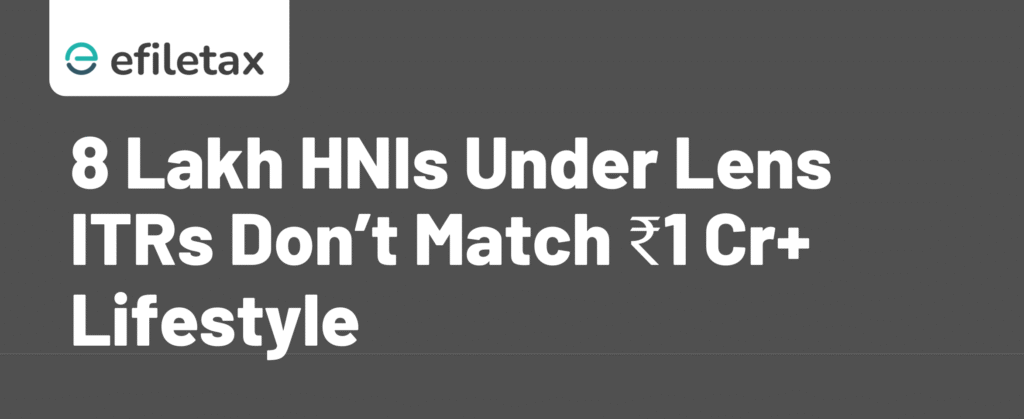
Why ₹1 Crore+ Earners Are Under the Tax Radar
Focus keyphrase: High net worth scrutiny
A recent Income Tax Department review revealed a striking gap: Around 7–8 lakh high net worth individuals (HNIs) are likely earning over ₹1 crore annually, but many don’t declare this in their ITRs. This growing compliance mismatch has prompted high net worth scrutiny by tax authorities.
Here’s what you must know if you’re a high-income taxpayer or a tax consultant managing such profiles.
What Triggered the Scrutiny?
The gap was detected using AI-powered analytics and Annual Information Statement (AIS) data.
Key Triggers:
- Luxury lifestyle indicators: High credit card bills, expensive foreign travel, high-value property purchases
- Business transactions: Disproportionate to declared business income
- Capital market activity: Significant gains not reflected in ITR
🔍 Expert View: Income declarations aren’t just about salary. If your lifestyle or investments don’t match your reported income, you risk notice under Section 148 or reassessment.
Legal Tools Used by the IT Department
| Provision | Usage |
|---|---|
| Section 148 | Reassessment of income based on new information |
| Section 133(6) | Seeking third-party info (banks, credit card issuers, etc.) |
| Section 142(1) | Inquiry before assessment |
| Rule 114E (SFTs) | Mandatory reporting by banks, mutual funds, etc., for high-value spends |
Reference: CBDT instructions and FAQs on non-filers and SFT surveillance
What You Must Do If You’re a High-Income Individual
✅ Disclose all income streams – salary, business, capital gains, interest, rent, crypto, etc.
✅ Match ITR with AIS – Check discrepancies with prefilled data
✅ Respond to notices promptly – Use e-Proceedings on the Income Tax portal
✅ Regularly update financial records – Link PAN with key accounts
Common Red Flags That May Trigger Scrutiny
- Income reported below ₹50 lakh despite luxury spending
- Owning multiple properties but low rental income declared
- No business income reported despite active GST filings
- High-value share trades or crypto transactions not shown
📌 Even if taxes are paid via TDS or advance tax, underreporting in ITR can still trigger scrutiny.
How Taxpayers Can Stay Safe
- Cross-verify Form 16, Form 26AS, and AIS
- Report ESOPs, foreign stock units, and bonuses correctly
For business owners:
- Align turnover in GST vs ITR
- Report cash transactions and capital introduced properly
For professionals (doctors, lawyers, influencers):
- Maintain books even if income is variable
- Use presumptive taxation only if eligible
FAQs on High Net Worth Scrutiny
Q1. Can I get a notice if my spends are high but income is low?
Yes. If your credit card bills, travel, or property purchases exceed declared income, you may receive an ITD query.
Q2. What should I do if AIS shows income I didn’t report?
Reconcile the difference. File a revised ITR or ITR-U (updated return) if needed.
Q3. Is scrutiny only for those earning ₹1 crore+?
No. Even mid-level taxpayers are monitored if there’s a lifestyle-income mismatch.
Final Words: Why Transparent Filing Matters
The era of high net worth scrutiny has arrived. With tech-backed surveillance and SFT data, underreporting is easily caught.
Don’t risk notices, penalties, or reassessment. Stay compliant.
📲 Need expert help?
Let Efiletax handle your income tax planning, AIS reconciliation, and ITR filing.
👉 Visit Efiletax.in to book a free consultation today.
Summary
The Income Tax Department’s AI-backed scrutiny reveals that 7–8 lakh Indians likely earn over ₹1 crore but underreport income. Learn what triggers high net worth scrutiny, how Section 148 applies, and what taxpayers must do to avoid notices and stay fully compliant.